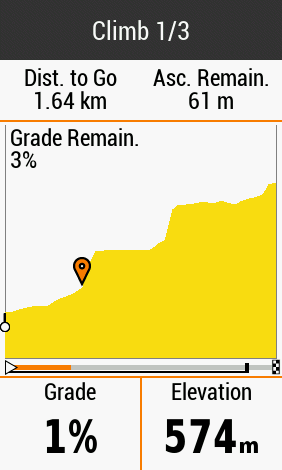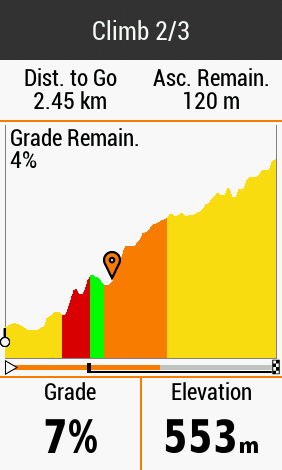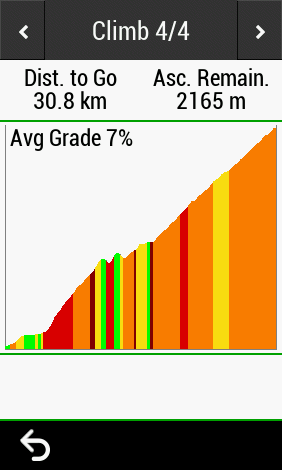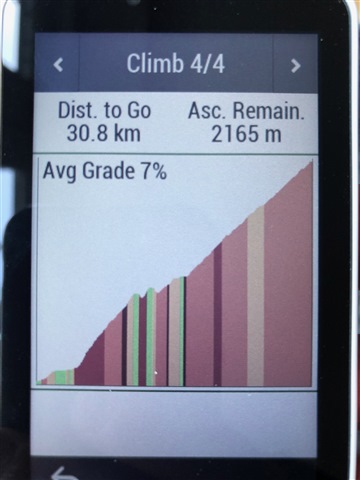Now that my 1030 has updated to 8.0 I just tested Climbpro on a course I ride every week. I created a route for the course on RideWithGPS, exported it in GPX format, and copied it to the 1030. When I loaded the route, it found the three hills I expected, but the gradients it shows on the graph don't match reality at all. The first hill shows up as looking like a staircase, but in fact the gradient doesn't vary much during the climb:

For the second climb, the Climbpro screen shows some downhill sections that don't exist at all - the gradient varies between about 2% and 11%, but at no point is there a descent during the climb:

Does the elevation information used to calculate the Climbpro screen come from the GPX file or the maps on the 1030?




